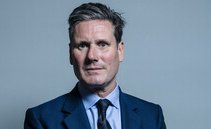Is the ECB at risk of cutting rates too little? Here’s why the Eurotower’s monetary policy is in the spotlight ahead of its September decision.

The ECB is preparing to cut rates again in September - according to forecasts - and the move is considered more necessary than ever by several officials and analysts.
There is, in fact, a risk that is being underestimated and that could jeopardize any attempt at recovery in the Eurozone: it is the remote possibility that the central bank will keep the cost of money firm for fear of an inflationary surge (linked above all to paychecks).
The alarm about a prolonged restrictive monetary policy - which slows growth and investments - was raised by Piero Cipollone, member of the ECB executive committee, in an interview with Le Monde.
The Eurotower cut rates in June from a record high and will almost certainly ease again on September 12, but the growth outlook has deteriorated over the summer, and policymakers are now debating whether they have not fallen behind the curve. Beware, therefore, of the consequences of an overly cautious policy on the reduction of the cost of investment: “There is a real risk that our stance could become too restrictive”, warned Cipollone.
The ECB risks cutting rates too little
“We must ensure that inflation converges towards our objective without unnecessarily slowing down the economy”: with this warning Cipollone warned against the temptation to follow the path of caution on rate cuts at the next ECB meeting on September 12.
The Italian board member said officials “should not be afraid that wages will rise faster than inflation for a while... Otherwise, I don’t see how we can sustain the recovery and, in turn, the rebound in productivity. We are not seeing a wage-price spiral. It is a natural recovery that is healthy for the economy.”.
“We desperately need investment and growth in Europe. Any delay in this area puts us at a serious disadvantage,” he added. Rate cuts therefore remain a necessary way forward to foster a new boost in consumer, saver, and business confidence.
Markets are pricing in at least two more rate cuts this year, in September and December, and also see a good chance for another move in October, partly because of the weak growth outlook and partly because the US Federal Reserve is expected to ease policy rapidly, forcing the ECB to do the same.
leggi anche
This is Keir Starmer’s Brexit plan

Cipollone was keen to highlight the risk of weak growth, held back by an anemic improvement in competitiveness and weakened by still-high rates. “The latest data, such as consumer confidence and activity indicators, especially for the manufacturing sector, have not been so encouraging. This poses a risk to the euro area growth outlook,” he said.
Ahead of September 12, Martins Kazaks, a Latvian member of the Governing Council, said the European Central Bank could lower borrowing costs at its meeting this month.
Kazaks pointed to high increases in utility costs, driven by rising wages, as a reason to remain cautious and ease monetary policy only gradually. But he said wage growth was moderating.
“Rates need to come down because the biggest part of the inflation problem has been solved. The discussion is only about how fast and how strongly,” Kazaks assured.
The case for another cut in borrowing costs was reinforced by inflation falling to its lowest level since mid-2021, although some policymakers stressed that the battle to tame prices was not over yet.
Original article published on Money.it Italy 2024-09-04 12:07:30. Original title: La Bce sta mettendo a rischio la ripresa in Europa?




